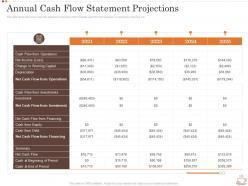In the intricate dance of finance, where every step and misstep can dictate the rhythm of success or failure, cash flow emerges as a silent yet powerful partner. Often overshadowed by its more glamorous counterparts like revenue and profit, cash flow is the lifeblood that sustains businesses through the unpredictable ebbs and flows of economic tides. In the realm of credit risk, where uncertainty looms large and potential pitfalls abound, understanding and managing cash flow becomes not just an advantage, but a necessity. This article delves into the pivotal role cash flow plays in reducing credit risk, illuminating how a keen awareness and strategic management of this financial stream can fortify businesses against the looming specter of insolvency. As we navigate this complex landscape, we will uncover the strategies and insights that empower organizations to transform cash flow from a mere financial metric into a robust shield against credit vulnerabilities.
Understanding Cash Flow Dynamics in Credit Risk Management
In the intricate world of credit risk management, cash flow stands as a pivotal indicator of a borrower’s financial health. It serves as a dynamic tool that offers a real-time glimpse into the liquidity and operational efficiency of an entity. By meticulously analyzing cash flow statements, financial institutions can gain insights into a company’s ability to generate cash to meet its debt obligations. This understanding not only aids in assessing the creditworthiness of potential borrowers but also in foreseeing potential default risks. A robust cash flow often translates to a lower credit risk, as it signifies a company’s capability to withstand economic fluctuations and honor its financial commitments.
- Liquidity Analysis: Evaluating cash flow helps in understanding the liquidity position, ensuring that the borrower can cover short-term liabilities.
- Operational Efficiency: A consistent cash inflow is indicative of efficient operations, reducing the likelihood of credit default.
- Predictive Insights: Cash flow trends provide predictive insights, enabling proactive risk mitigation strategies.
In essence, cash flow dynamics are not just about numbers; they narrate the financial story of an organization, offering a strategic advantage in managing credit risk. By prioritizing cash flow analysis, lenders can enhance their risk assessment frameworks, ensuring a more resilient financial ecosystem.

Strategic Cash Flow Analysis for Enhanced Creditworthiness
In the realm of financial management, understanding and analyzing cash flow is crucial for maintaining and enhancing creditworthiness. A strategic approach to cash flow analysis can significantly mitigate credit risk by providing a clear picture of a company’s financial health. Cash flow analysis helps identify potential liquidity issues before they escalate, ensuring that businesses can meet their short-term obligations without strain. By maintaining a positive cash flow, companies can demonstrate their ability to generate sufficient revenue to cover expenses, thus reassuring creditors and investors alike.
- Timely Payments: Ensuring consistent and timely payment of debts and obligations.
- Investment in Growth: Allocating resources effectively to foster business expansion.
- Risk Management: Identifying and mitigating potential financial risks proactively.
Moreover, a thorough cash flow analysis aids in strategic decision-making, allowing businesses to plan for future investments and operational improvements. This proactive approach not only reduces the likelihood of financial distress but also enhances the company’s reputation in the eyes of lenders. By showcasing a robust cash flow, businesses can negotiate better credit terms, lower interest rates, and secure more favorable financing options, ultimately leading to a stronger financial standing.
Leveraging Cash Flow Forecasting to Mitigate Financial Risk
In the ever-evolving landscape of financial management, the ability to anticipate and manage cash flow is paramount to reducing credit risk. By employing cash flow forecasting, businesses can proactively identify potential liquidity shortfalls and address them before they escalate into significant financial challenges. This strategic foresight allows companies to maintain a robust financial position, ensuring they can meet their obligations and sustain operations even in volatile markets.
Cash flow forecasting empowers businesses to make informed decisions by providing a clear picture of future cash inflows and outflows. This enables companies to:
- Optimize Working Capital: By understanding when cash is available, businesses can better manage their payables and receivables, ensuring they have the liquidity needed to seize opportunities and avoid unnecessary borrowing.
- Enhance Financial Planning: Accurate forecasts allow for more precise budgeting and financial planning, helping to align financial strategies with business goals.
- Mitigate Financial Risk: Early detection of cash flow issues allows for timely intervention, reducing the likelihood of default and preserving creditworthiness.
Incorporating cash flow forecasting into the financial strategy not only fortifies a company’s defenses against credit risk but also fosters a culture of financial resilience and strategic agility.
Implementing Robust Cash Flow Strategies for Credit Stability
In the ever-evolving landscape of financial management, crafting robust cash flow strategies stands as a cornerstone for maintaining credit stability. The ability to anticipate and manage cash inflows and outflows not only ensures liquidity but also fortifies an organization’s creditworthiness. By meticulously analyzing cash flow patterns, businesses can preemptively identify potential shortfalls and strategically allocate resources to mitigate risks. This proactive approach not only safeguards against unforeseen financial disruptions but also enhances the ability to meet debt obligations, thus reducing the likelihood of credit downgrades.
To implement effective cash flow strategies, consider the following key practices:
- Regular cash flow forecasting: Utilize advanced forecasting tools to predict cash flow trends and prepare for future financial scenarios.
- Expense management: Conduct periodic reviews of expenses to identify areas for cost reduction without compromising operational efficiency.
- Diversified revenue streams: Develop multiple revenue channels to cushion against market volatility and ensure a steady cash inflow.
- Strategic debt management: Optimize debt repayment schedules to maintain a healthy balance between liabilities and available cash.
By integrating these strategies, organizations can not only enhance their financial resilience but also foster a stable credit environment, paving the way for sustainable growth and success.





